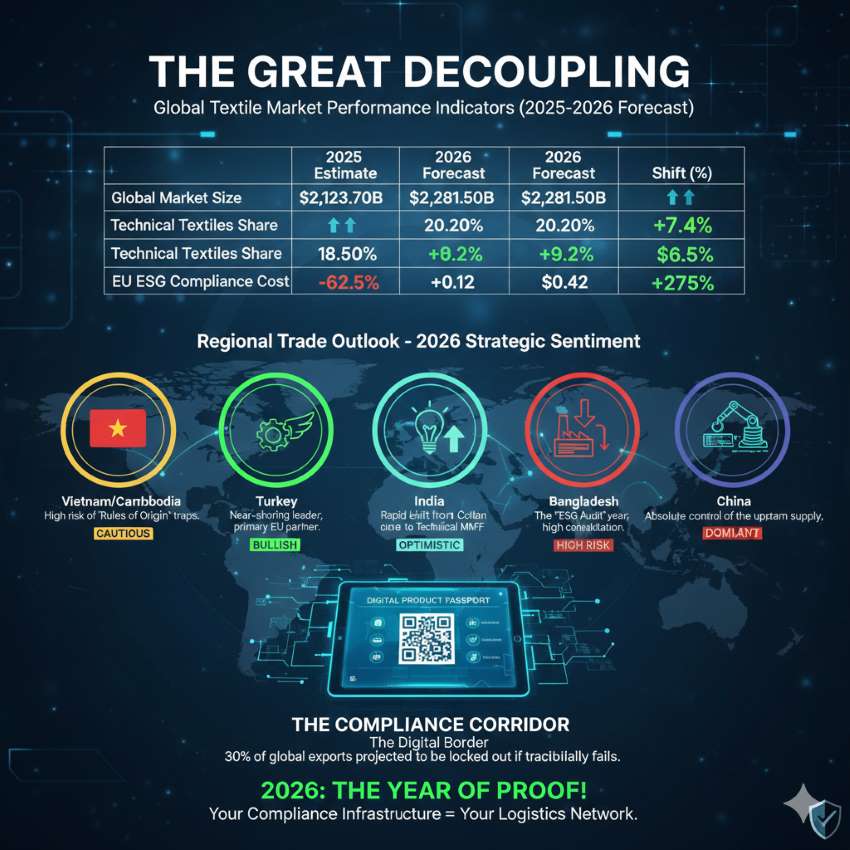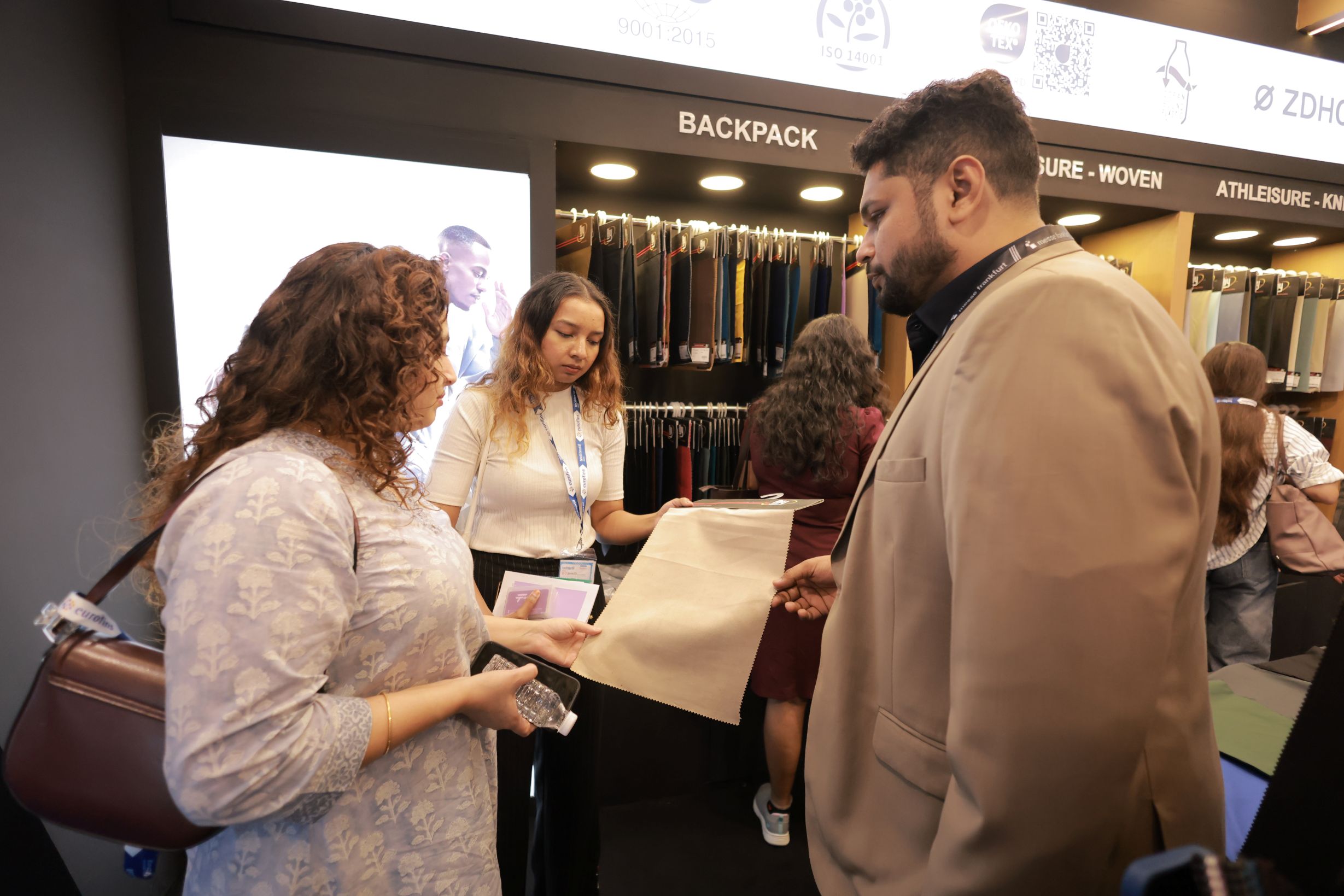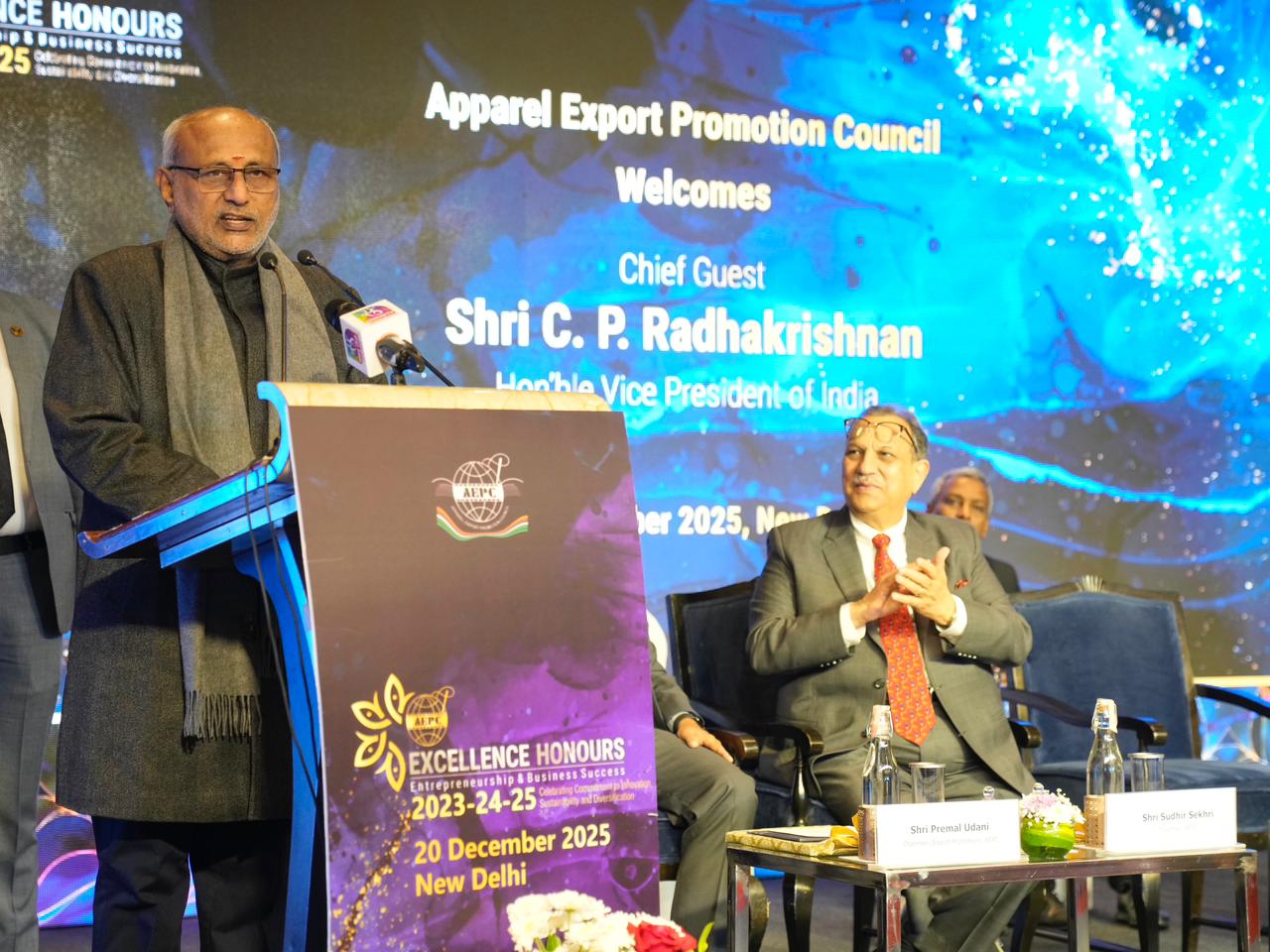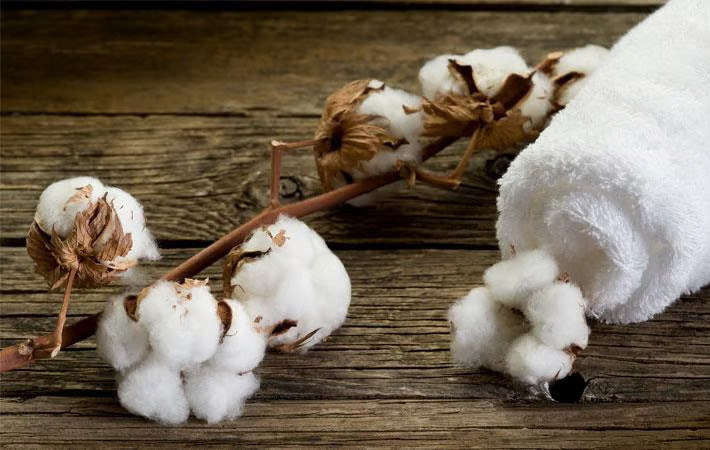FW
Pakistan’s textile value-added products are unable to fetch a high value due to poor packaging. The industry says a product and packaging centre will ensure better packaging. Since fabrics are in limited supply, the garment sector in Pakistan has a restricted product line for the export market. Foreign buyers demand garments made of technical fabrics, which are not available or produced by Pakistani weavers.
The industry says it can’t compete in the global market without support or a proper plan. Exporters say formulation of sector-wise policies can control the decline and stabilise exports. Refunds are another problem. Sales tax refunds and customs rebates are pending. Exporters complain of cash liquidity and say this is the main cause for the continuous drop in exports and the reason the export industry is unable to tap its potential in accordance with capacity.
Garment manufacturers and exporters have called for an aggressive marketing plan to enhance exports and get the maximum benefit of GSP Plus status. Pakistan’s textile industry has witnessed dwindling investments over the last decade. Currently, around 35 per cent of the textile industry’s production capacity is impaired.
Prospective investors are reluctant to make new investment decisions due to the high cost of doing business. As a result, the industry has lost its technological advantage over its competitors.
India and Hong Kong have entered into a double taxation avoidance agreement. This is aimed at stimulating the flow of investment, technology and personnel from India to Hong Kong and vice versa, preventing double taxation and providing for exchange of information. It will improve transparency in tax matters and help curb tax evasion and tax avoidance.
Investors will get an advantage of a lower withholding tax of 10 per cent on interest or royalties provided they fulfill the main purpose test, which broadly checks that the transaction is not entered into specifically to avoid taxes. It also provides for capital gains taxation of indirect transfers. It provides that gains from sale of shares of a company deriving more than 50 per cent of its value from property situated in a country will be taxed in that country. There are exemptions for airline and shipping companies.
Hong Kong is an important financial and trading partner and the absence of a treaty was a hindrance. Now things are expected to move forward. The agreement is expected to give protection against double taxation to over 1,500 Indian companies and businesses that have a presence in Hong Kong as well as to Hong Kong-based companies providing services in India.
Gap is undertaking water conservation with a new sustainable manufacturing goal to save 10 billion liters of water by the end of 2020. The goal would yield water savings equal to the amount of daily drinking water needed for 5 billion people. The company stated efficiency improvements and product innovation would be critical to achieving the potential water savings.
Gap’s new manufacturing goal is part of its water stewardship strategy that focuses on reducing environmental impact at the raw materials and product design level, in addition to helping communities touched by the company’s efforts to improve clean water accessibility and sanitation processes. Over the past few years, Gap Inc. has also elevated water efficiency improvements at the mill, laundry and product level.
Gap is actively monitoring wastewater quality at denim laundries through its Water Quality Program, an initiative launched in 2004 that ensures denim laundries’ wastewater is properly treated. To improve its denim products, the Gap brand established a denim wash program dubbed Washwell, which reduces water use by 20 percent or more. Since launching the program in 2016, the Gap brand has saved more than 100 million liters of water.
The company is also working with other leading authorities to support more environmentally responsible manufacturing processes. The company’s Women and Water program is working to help communities boost clean water accessibility and sanitation. In 2014, the company integrated its water, sanitation and hygiene curriculum into its P.A.C.E. program that educates female garment workers about safe water-handling practices.
Since 2014, Gap projects have worked to conserve more than 2.4 billion liters of water and progress toward the new goal is under way due to improvements in clean water access, product design and material sourcing.
From futuristic denim technology brands like e-indigo, chrome chord, hybrid chinos to handloom ones like ikat — denim is witnessing a revolution in terms of design aesthetics and accessibility to cater to the evolving mentality of customers.
A wash trend collection has been developed at Arvind Denim Lab using eco-friendly technologies and processes. E-indigo, an innovative line, uses a new indigo dyeing technology, which is not only substantially more sustainable compared with traditional dyeing techniques, it also imparts a fresh appeal to the finished product.
Levi Strauss has devised a new operating model that ushers denim finishing into the digital era. Project FLX (future-led execution) digitizes denim finish design and enables a responsive and sustainable supply chain at an unparalleled scale. By replacing manual techniques and automating the jeans finishing process, Project FLX radically reduces time to market — and eliminates thousands of chemical formulations from jeans finishing.
Using this method Levi Strauss can replace manual techniques and automate the time-consuming, labor-intensive and chemical-reliant process of hand-finishing. By using lasers in new ways, finishing time is cut dramatically – from two to three pairs per hour to 90 seconds per garment, followed by a final wash cycle. Levi Strauss has begun piloting Project FLX with select vendors and retail partners and will roll it out across its supply chain in a phased approach over the next two years.
"Manchester used to be the hub of Britain’s textile trade even before it became a hub for fast fashion. Boohoo, Missguided and In The Style are just some of e-tailers headquartered there today but at the time of the Industrial Revolution, the city’s red-brick buildings were home to cotton mills. Like every country, mills started shutting down one after another as retailers found cheaper alternatives to British cotton in India and China."

Manchester used to be the hub of Britain’s textile trade even before it became a hub for fast fashion. Boohoo, Missguided and In The Style are just some of e-tailers headquartered there today but at the time of the Industrial Revolution, the city’s red-brick buildings were home to cotton mills. Like every country, mills started shutting down one after another as retailers found cheaper alternatives to British cotton in India and China. The last mills closed its doors in early 1980s but after years of absence, cotton spinning has now returned to Manchester.
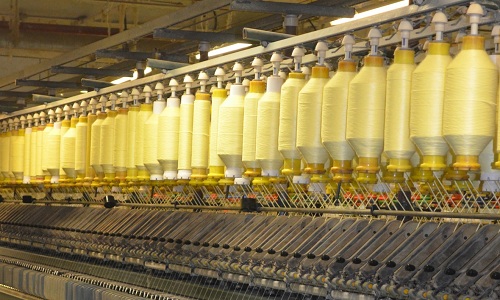
Following a £5.8 million investment – £2.8 million of its own investment, £2 million from the Greater Manchester Combined Authority’s investment fund and £1million from the government’s Textiles Growth Fund – technical textiles company Culimeta-Saveguard launched English Fine Cottons in 2015. Test production at its Dunkinfield mill started in July 2016 and in last December, it opened for business. Tracy Hawkins, Business Development Manager, Dunkinfield says while they didn’t start the factory with the intent to revive the UK textile industry, a lot of thought went into opening the mill and they thought it was a good investment because of changes in the market. The project came to fruition just before Brexit. Retailers are worrying about the cost of bringing in raw goods from overseas while exchange rate is another concern. The exchange rate works in their favour when they are selling abroad and there are a lot of international markets, particularly Japan, that are interested in British heritage and quality.
Growing cotton production
The campaign ‘Make it British’ found average production was up 25 per cent and half of the 100 fashion and textile manufacturers surveyed recoded a turnover increase in 2017 compared to 2016. However, Britain’s decision to leave the European Union could provide a further boost. Kate Hills, a former buyer for Marks & Spencer and Burberry and founder, Make it British, says Brexit is an opportunity for textiles reshoring. Locally sourced yarn means retailers aren’t at the mercy of currency fluctuations or economic disasters in cotton-sourcing countries, and everyone is looking for less trouble in their supply chain. However, the biggest challenge is still finding the right skills. Hawkins points out it is the quality of the mills’ cotton, rather than speed to market, that proved to be the biggest draw for brands and retailers.
Data suggests there are opportunities for British textiles but there is still a long way to go before the scale of the industry can match up to its counterparts. Currency swings and the opportunity to have a stronger grip on supply chains make UK textiles tempting for retailers but higher prices, skills gaps and the industry’s small scale are still posing problems.
Faced with fierce online competition from the likes of Amazon affordable fashion giants Zara and Hennes & Mauritz AB (H&M) are shoring up their defenses, trying to use their stores to boost Internet sales. Separated by thin partitions, 15 little photography studios are used exclusively to update the Web site line-up in a corner of Zara’s huge headquarters near Corunna in Spain’s northwest.
Under a constant barrage of camera flashes, models strike pose after pose to get seven photos showing the piece of clothing under all angles. In total, 1,500 photos are put online twice a week to match the speed at which articles of clothing are replaced in-store.
Last year, these represented 10 per cent of sales, a figure unveiled last week after years of secrecy over a crucial sector that Inditex only entered in 2010, on the late side. Gaining more visibility online was the main challenge for Inditex if it wants to remain competitive in the long term, says IG Markets analyst Sergio Avila Luengo. The retail giant started having trouble clearing stocks for the first time last year due to competition from Amazon.
On its part, Sweden’s H&M has recognized that a drop in profits last year was due in large part to online competition. Faced with this threat, H&M devoted 45 per cent of its investment to Internet sales last year, or about €600 million, for a new photography studio and personalized apps for its clients.
Inditex has opened 19 warehouses in the world dedicated to online sales. H&M is soon to follow suit. Both are also taking advantage of their thousands of stores, including for client delivery. Both groups are implementing systems to avoid missing out on a sale if for instance the size is not available for a customer, by pointing the customer to the item online. Their strategy was to combine both sales methods, says Gildas Minvielle, head of the economic observatory at the French Fashion Institute.
A two-day World Trade Organization (WTO) informal ministerial meeting is being held in India. The objective of the ministerial meeting is to facilitate an informal and frank exchange of views on the agenda for negotiations at the WTO as well as institutional issues. Participants could also discuss any other theme of common interest to all members.
India seeks guidance on the future of the multilateral trading system amid attempts by the US to undermine WTO rules, raising fears of trade wars. The decision of the US to raise tariffs on steel and aluminium beyond its commitment under the WTO on the grounds of security is expected to dominate discussions at the meeting.
India has termed the move discriminatory and demanded an exclusion as granted to key allies of the US such as Canada and Mexico, while the European Union has threatened to retaliate by hiking tariffs on a set of goods it imports from the US. The US has started systematically undermining the WTO. The rules-based system that drives WTO through the dispute settlement mechanism is now being threatened by the US.
The US wants to go back to the pre-WTO system where abiding by a verdict of the dispute settlement mechanism was not binding and the winning country had to sit down and negotiate with the losing party, which could end up giving more powers to large developed countries to arm-twist their small economic partners.
Uzbekistan wants to be part of the World Trade Organization (WTO). In this regard, the country is implementing a number of measures. The competitiveness of domestic enterprises will be enhanced as will be their technical and technological potential. To avoid the negative consequences from Uzbekistan’s accession to the WTO, this process is planned to be implemented on a comprehensive assessment basis for the readiness of certain sectors of the economy, various groups of domestic commodity producers and the conformity of the state regulation mechanisms used.
To strengthen the country’s position in the negotiation process on accession to the WTO, and to ensure the protection of sensitive sectors of the economy, such as the textile, food, automotive and agriculture sectors, customs duties rates will be adjusted.
The package of measures also implies institutional reforms, the development of an international legal framework on a bilateral and multilateral basis, improvement of national legislation with further liberalization of the foreign trade regime and consistent harmonization with international norms and rules of the World Trade Organization.
The procedure for joining the WTO consists of several stages. This is a long process that can take several years. There are 164 members of the World Trade Organization. That's 84 per cent of the 196 countries in the world. The WTO covers more than 94 per cent of the total volume of commodity flows.
US businesses want their country to drop the idea of slapping tariffs on Chinese imports. They say the tariffs would trigger a chain reaction of negative consequences for the US economy, provoking retaliation, stifling US agriculture, goods, and services exports and raising costs for businesses and consumers.
They say the way to respond to unfair Chinese practices and policies is not by imposing tariffs or other measures that will harm US companies, workers, farmers, ranchers, consumers, and investors.
The trade groups represent everything from the high-tech industry to apparel vendors, agribusiness and auto parts importers, companies such as Apple, Alphabet - the parent company of Google - Walmart and Nike. US officials have been urged to work with like-minded partners to address common concerns with China's trade and investment policies. Unilateral US tariffs would only serve to split the United States from its allies, hinder joint action to effectively address shared challenges, and ensure that foreign companies take the place of markets that American companies, farmers and ranchers must vacate when China retaliates.
The United States has long accused China of forcing US companies to turn over proprietary commercial information and intellectual property as a condition of operating in China.
Multi-stage and different tax slabs are affecting the Indian manmade fiber sector. In the international market Indian manmade sector is expensive by five to eight per cent compared to East Asian countries, mainly because of multi-level taxes that are not fully rebated and high interest rates.
The sector saw almost nine per cent per annum growth in the domestic market but exports have stagnated for the last couple of years. Accumulated credit under GST from raw materials and capital goods investments are affecting the industry and blocking investments. Though the actual production cost for the manmade fiber sector is lower compared to China, India is not competitive because of taxes.
India can capture the space vacated by China in the international textile market by focusing on manmade fibers. Synthetic textiles made from manmade fiber account for 70 per cent of the world textile supply. Contrary to the global trend, cotton still commands more than 50 per cent of India’s textile production.
India is already reeling under a huge competitive disadvantage in the international textile market when it comes to manmade fiber based textile products. Competitors like China, Vietnam and Bangladesh are ahead in global exports of manmade fibers.

